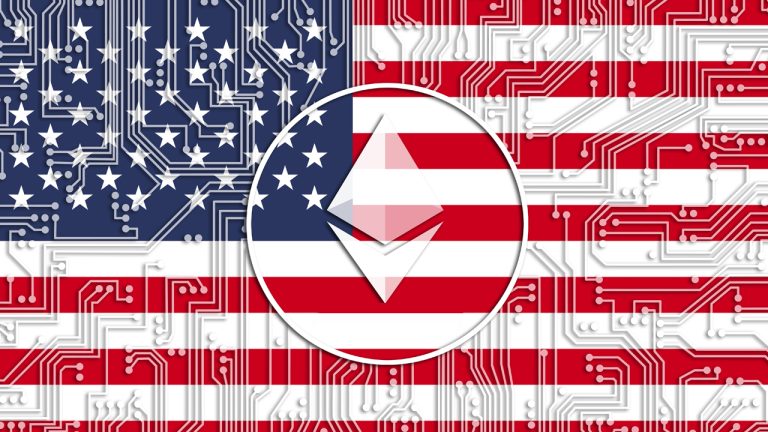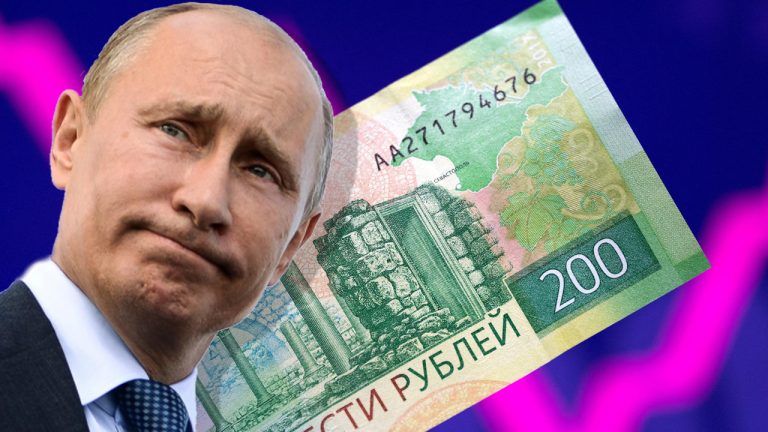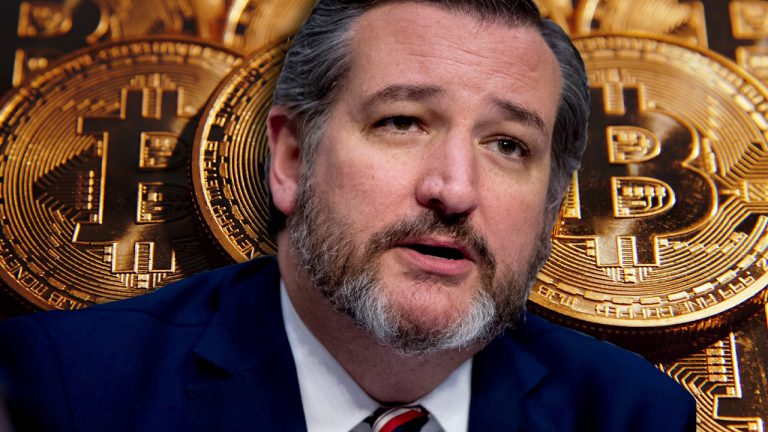 On Feb. 9, 2023, the cryptocurrency community learned of the U.S. Securities and Exchange Commission’s (SEC) crackdown on staking services. The SEC fined Kraken, a cryptocurrency exchange, $30 million for offering an “unregistered offering” related to its U.S. staking service. Digital currency advocates are now debating what constitutes a yield product versus a noncustodial solution […]
On Feb. 9, 2023, the cryptocurrency community learned of the U.S. Securities and Exchange Commission’s (SEC) crackdown on staking services. The SEC fined Kraken, a cryptocurrency exchange, $30 million for offering an “unregistered offering” related to its U.S. staking service. Digital currency advocates are now debating what constitutes a yield product versus a noncustodial solution […]
Members of Crypto Twitter were quick to mock Tucker Carlson, who provided no supporting evidence to back his claims.
Controversial Fox news television host Tucker Carlson has proposed a curious conspiracy theory that seeks to link airline delays in the United States and Canada with a surge in the Bitcoin price.
He suggested the computer outage behind the widespread delays may have been caused by ransomware and theorized the US Government may have bought a large amount of Bitcoin to pay the ransom.
However he did not provide any evidence for his claims.
Speaking on his “Tucker Carlson Tonight” segment of Fox News on Jan. 17, Carlson argued that the Bitcoin (BTC) price increased 20%+ soon after the U.S. Federal Aviation Administration (FAA) confirmed the disruption on Jan. 11:
“Almost all ransoms like this are paid in Bitcoin. So if the US government was buying huge amounts of Bitcoin in order to pay a ransom, Bitcoin prices would surge, of course. So the question is has that happened? Well yes, it has happened.”
“Since the nationwide ground stop last Thursday the price of Bitcoin has shot up about 20%. Is that a coincidence?” he added.
While Tucker’s fanbase online appears to believe the theory is plausible, it was less well received by the crypto community. Nick Almond, the founder of FactoryDAO described Tucker’s wild theory as “maximum tin foil” to his 13,500 Twitter followers:
Maximum tin foil https://t.co/sUYHV0nQOE
— drnick ️² (@DrNickA) January 17, 2023
Almond replied to supporters of the theory that he doubted very highly that the U.S. government would buy billions in Bitcoin on the open market to pay for the ransoms.
Blockstream CEO and cypherpunk Adam Back also mocked Carlson to his 506,000 Twitter followers in stating that the two events were exactly what Carlson described them to be — a coincidence:
"is that a coincidence?", yes, it is a coincidence. lols.
— Adam Back (@adam3us) January 17, 2023
Other arguments made against the theory on Crypto Twitter included that the US government already has a large amount of confiscated Bitcoin, that it would buy it OTC if it did buy it, and as Bitcoin is traceable and transparent, large ransoms are more likely to be paid in Monero.
Stack Hodler pointed out to his 30,000 followers that the recovery of $5B in assets by FTX was a more likely explanation for the recovery in crypto markets:
Morning of Jan 11: All flights grounded in US due to a "critical tech outage"
— Stack Hodler (@stackhodler) January 17, 2023
Afternoon of Jan 11: FTX says it has recovered more than $5 Billion worth of cash
Tucker Carlson: Did the US government buy Bitcoin for a ransom?
Can you imagine... https://t.co/Bng9VfxHHU pic.twitter.com/VzwbSdt3s9
More than 1,300 flights were cancelled with an additional 10,000 flights being delayed in the first two days of the disruption.
Related: Ripple CTO shuts down ChatGPT’s XRP conspiracy theory
The FAA stated on Jan. 11 that the disruption was caused by a “damaged database file” in its Notice to Air Mission (NOTAM) system, which they said was not wasn’t inflicted by a cyber attack.
The issue has reportedly been fixed and most flights have since resumed normal operations.
 While the ongoing war in Ukraine continues, the Ministry of Economic Development of the Russian Federation detailed this week that Russia’s economic hardships are less severe than expected. Russia’s economic ministry says that the economy’s gross domestic product (GDP) is estimated to drop by 4.2% this year and Russia’s inflation won’t be as elevated as […]
While the ongoing war in Ukraine continues, the Ministry of Economic Development of the Russian Federation detailed this week that Russia’s economic hardships are less severe than expected. Russia’s economic ministry says that the economy’s gross domestic product (GDP) is estimated to drop by 4.2% this year and Russia’s inflation won’t be as elevated as […] During the last week, mainstream media outlets have been publishing reports that say “Bitcoin’s creator Satoshi Nakamoto could be unmasked at [a] Florida trial.” Alongside this, the name “Satoshi Nakamoto” has been trending in people’s discussions on social media for the last few days as well. The Internet Is Buzzing Over Conversations Concerning Bitcoin’s Mysterious […]
During the last week, mainstream media outlets have been publishing reports that say “Bitcoin’s creator Satoshi Nakamoto could be unmasked at [a] Florida trial.” Alongside this, the name “Satoshi Nakamoto” has been trending in people’s discussions on social media for the last few days as well. The Internet Is Buzzing Over Conversations Concerning Bitcoin’s Mysterious […]
CNN will drop NFTs depicting historic moments such as space travel, technological advancements, and presidential elections.
CNN has followed Fox and Time Magazine into the NFT market, announcing the launch of collectible historic moments from the news.
CNN’s NFT project is dubbed “Vault by CNN: Moments That Changed Us” and includes a series of tokenized iconic moments from its 41-year history, along with a vault to purchase, store and display the NFTs.

The news organization has not revealed which specific historic moments will be tokenized, however, it noted that themes including CNN exclusives, notable firsts, world history, and presidential elections, will be covered.
The initial launch will include six weekly drops starting from late June, with CNN teasing the first drops may depict space travel and election results. The NFTs will be sold in a combination of open and limited editions.
The NFTs will be minted on the Flow blockchain, which CNN chose for its energy-efficient proof-of-stake consensus mechanism. Flow is also home to NBA Top Shot, which has had huge success selling iconic sporting ‘moments’.
To purchase NFTs, users will need to sign up to CNN’s vault, where they will store their moments. Cryptocurrency is not be required to purchase, with the platform accepting credit cards via third-party payment platform Stripe. The vault’s description reads:
“Until now, there has been no way to 'collect' these moments. Users can often find old footage online, or packaged up in documentaries, but they cannot 'own' them or display them in the way they can with a print newspaper or magazine.”
CNN has also partnered with video framing firm Infinite Objects so that users will have the option of rendering their NFT onto a screen and displaying it physically offline. The vault’s description reads.
Interestingly CNN’s online archive already boasts 700,000 hours of news content that can already be purchased and downloaded without conferring 'ownership'.
Despite putting forward ownership as a value proposition of the NFTs, they note that “CNN retains copyright and ownership over the content.”
Related: Want to own an NFT of your favorite movie scene? Soon, you might be able to
A growing number of news outlets and media organizations have entered the NFT market in 2021.
CNN’s move into NFTs follows Fox Corp’s announcement of a $100 million creative fund for NFT content creation yesterday to accompany its animated tv shows.
In late March, Time Magazine entered the market with three tokenized magazine covers on SuperRare, with the “TIME Space Exploration — January 19th, 1959” generating the biggest sale of 135 Ether (ETH) worth around $318,000 at today’s prices.
Since then, Time has dropped another seven NFTs depicting magazine covers, with the “TIME First Issue — March 3, 1923” fetching 120 ETH worth roughly $283,000 in June.
 This week the United States senator from Texas, Ted Cruz, appeared on the Fox News television broadcast Hannity and discussed the leading crypto asset bitcoin. Cruz told Hannity he believes people are investing in bitcoin because they believe America is on the verge of an inflation crisis. Ted Cruz: ‘We’re Seeing Inflation — I Think […]
This week the United States senator from Texas, Ted Cruz, appeared on the Fox News television broadcast Hannity and discussed the leading crypto asset bitcoin. Cruz told Hannity he believes people are investing in bitcoin because they believe America is on the verge of an inflation crisis. Ted Cruz: ‘We’re Seeing Inflation — I Think […]